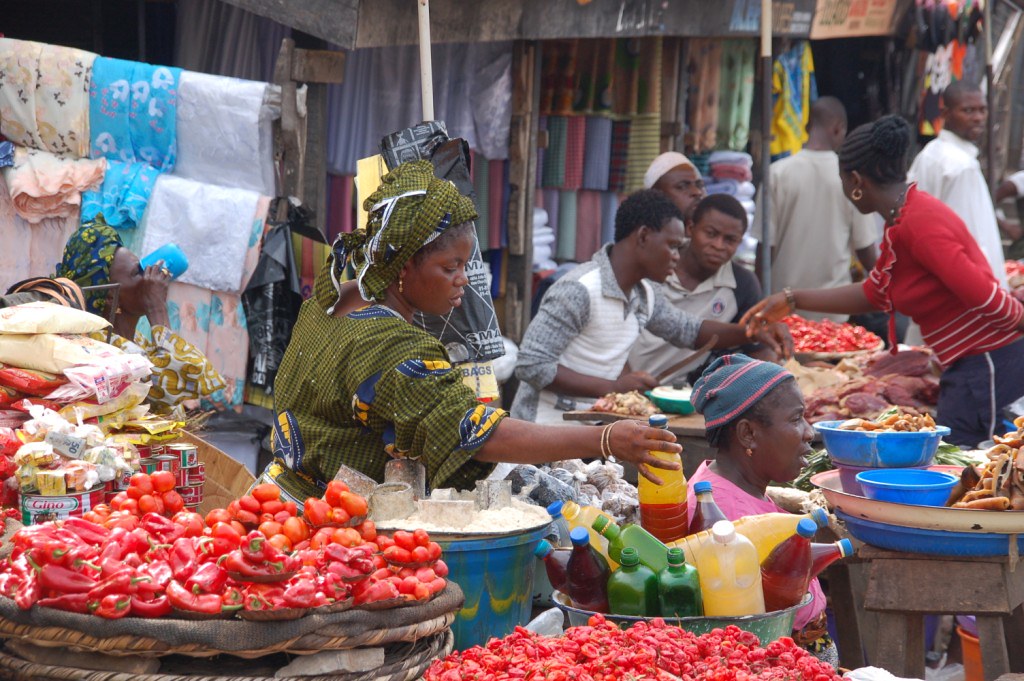Global food commodity prices fell in June for the third consecutive month, the Food and Agriculture Organisation of the United Nations (FAO) has said.
The fall was led by declines in the international prices of vegetable oils, cereals and sugar, while dairy and meat prices increased, according to details highlighted in the Food Price Index report released on Friday.
The index tracks the international prices of the most commonly traded food commodities.
The FAO Food Price Index averaged 154.2 points in June 2022, down 3.7 points (2.3 per cent) from May, marking the third consecutive monthly decline, though still 29.0 points (23.1 per cent) above its value a year ago.
“The drop in June reflected declines in the international prices of vegetable oils, cereals and sugar, while dairy and meat prices increased,” FAO said.
According to the report, the FAO Vegetable Oil Price Index averaged 211.8 points in June, down 7.6 per cent month-on-month, driven by lower prices across the palm, sunflower, soy and rapeseed oils.
It said international palm oil prices declined for the third consecutive month in June, as the seasonally rising output of major producing countries coincided with prospects of increasing export supplies from Indonesia amid large domestic inventories.
In the meantime, the report said world sunflower and soy oil price quotations also declined, tied to subdued global import demand in the wake of rising costs observed in recent months.
“In the case of rapeseed oil, besides demand rationing, international prices weakened on the imminent arrival of new crop supplies,” it said.
The report said the FAO Cereal Price Index averaged 166.3 points in June, down 4.1 per cent from May, but still 27.6 per cent above its June 2021 value.
It said after reaching a near-record level in May, international wheat prices fell by 5.7 per cent in June but were still up 48.5 per cent from their values last year.
“The decline in June was driven by seasonal availability from new harvests in the northern hemisphere, improved crop conditions in some major producers, including Canada, higher production prospects in the Russian Federation, and slower global import demand.
“International coarse grain prices fell by 4.1 per cent in June but were still 18.4 per cent above their year-earlier values. Downward pressure stemming from seasonal availability in Argentina and Brazil, where maize harvests progressed quickly, and improved crop conditions in the United States of America underpinned a 3.5-per cent decline in world maize prices in June.
The report said concerns over demand prospects amidst signs of an economic slowdown added to the downward pressure.
“Among other coarse grains, sorghum and barley prices fell in June by 4.1 per cent and 6.1 per cent, respectively, in tandem with lower maize and wheat quotations.
“Strong demand for Indica and basmati rice, coupled with thinning basmati availability, kept international rice prices on the rise in June,” the report said.
Sugar
According to the report, the FAO Sugar Price Index averaged 117.3 points in June, down 3.1 points (2.6 per cent) from May, marking the second consecutive monthly decline and reaching its lowest level since February.
ⓘ
It said the slowdown in global economic growth weighed on international sugar demand and price quotations in June.
On the supply side, the report said good global availability prospects continued to exert downward pressure on prices.
“The weakening of the Brazilian real against the US dollar and lower ethanol prices in Brazil prompted producers to step up sugar production, contributing to higher supplies and lower world sugar prices in June.
“However, uncertainties over the current season’s outturn in Brazil prevented more substantial price declines,” the report said.
Other indices rise
In the report, the FAO Dairy Price Index averaged 149.8 points in June, up 4.1 per cent from May and as much as 24.9 per cent above its June 2021 value.
The report said in June, international prices of all dairy products increased.
“Quotations for cheese rose the most, underpinned by a surge in import demand for spot supplies amid market concerns over supply availability later in the year, as the early summer heat wave further weighed on already low milk output in Europe.”
The report noted that the world milk powder prices increased on strong import demand, persistent global supply tightness and low inventory levels.
“International butter prices rebounded as market uncertainty over milk deliveries in the months ahead bolstered foreign purchases as well as internal demand in Europe,” it said.
The FAO Meat Price Index averaged 124.7 points in June, up 1.7 per cent from May, setting a new record high and exceeding by 12.7 per cent its June 2021 value.
“The world prices across all meat types increased, with poultry quotations rising sharply, reaching an all-time high, underpinned by the continued tight global supply conditions impacted by the war in Ukraine and the Avian Influenza outbreaks in the Northern Hemisphere.
ⓘ
“Bovine meat prices edged up, as China lifted its import restrictions for purchases from Brazil.
Meanwhile, the report said pig meat prices recovered slightly on higher imports by several leading importers, amid continued low purchases by China.
“International ovine meat prices also bounced back on lower exportable volumes from New Zealand, notwithstanding subdued demand from Northern Asia,” the report said.
Outlook
FAO said it raised its forecast for global cereal production in 2022 by 7 million tonnes in July from the previous month and is now pegged at 2 792 million tonnes.
“This is still 0.6 per cent short of the world output in 2021.
“The month-on-month increase predominantly rests on a 6.4-million-tonne upward revision made to the coarse grain production forecast, with the world output seen reaching 1 501 million tonnes in 2022, only 0.5 per cent below the 2021 outturn,” it said.
The report said the forecast for world cereal utilization in 2022/23 has also been lifted, up 9.2 million tonnes to 2 797 million tonnes, but is still 1.7 million tonnes (0.1 per cent) below the 2021/22 level, mostly reflecting expectations of lower feed use.
It said the latest forecast for world trade in cereals in 2022/23 stands at 468 million tonnes, up 4.8 million tonnes from last month but representing the lowest level in three seasons and a decrease of 11.4 million tonnes (2.4 per cent) from the 2021/22 volume.
“Accounting for the bulk of the decline, trade-in coarse grains is forecast to contract by 4.1 per cent in 2022/23 (July/June) from the 2021/22 estimated level, largely driven by war-related losses of maize and barley exports from Ukraine,” the report said.










